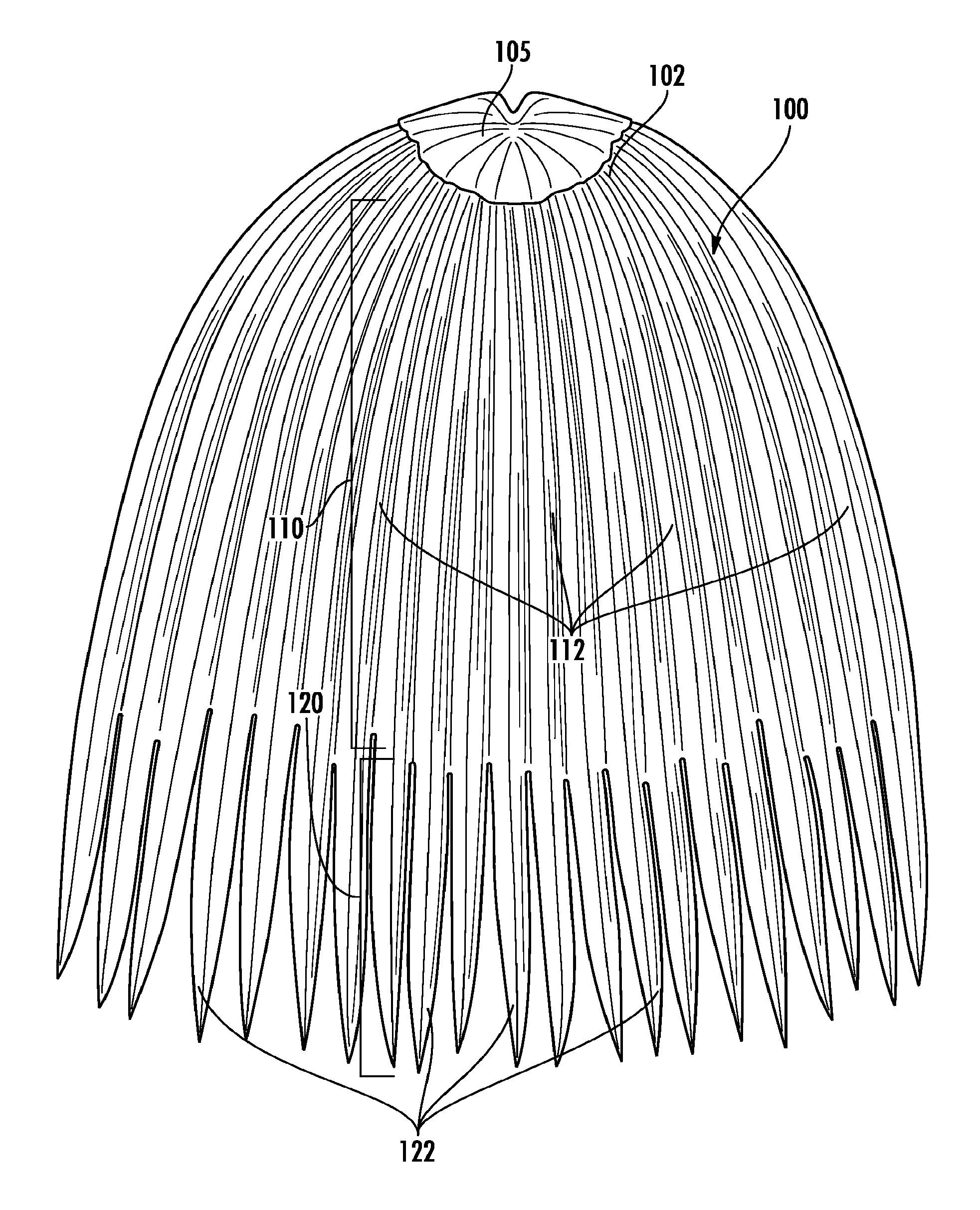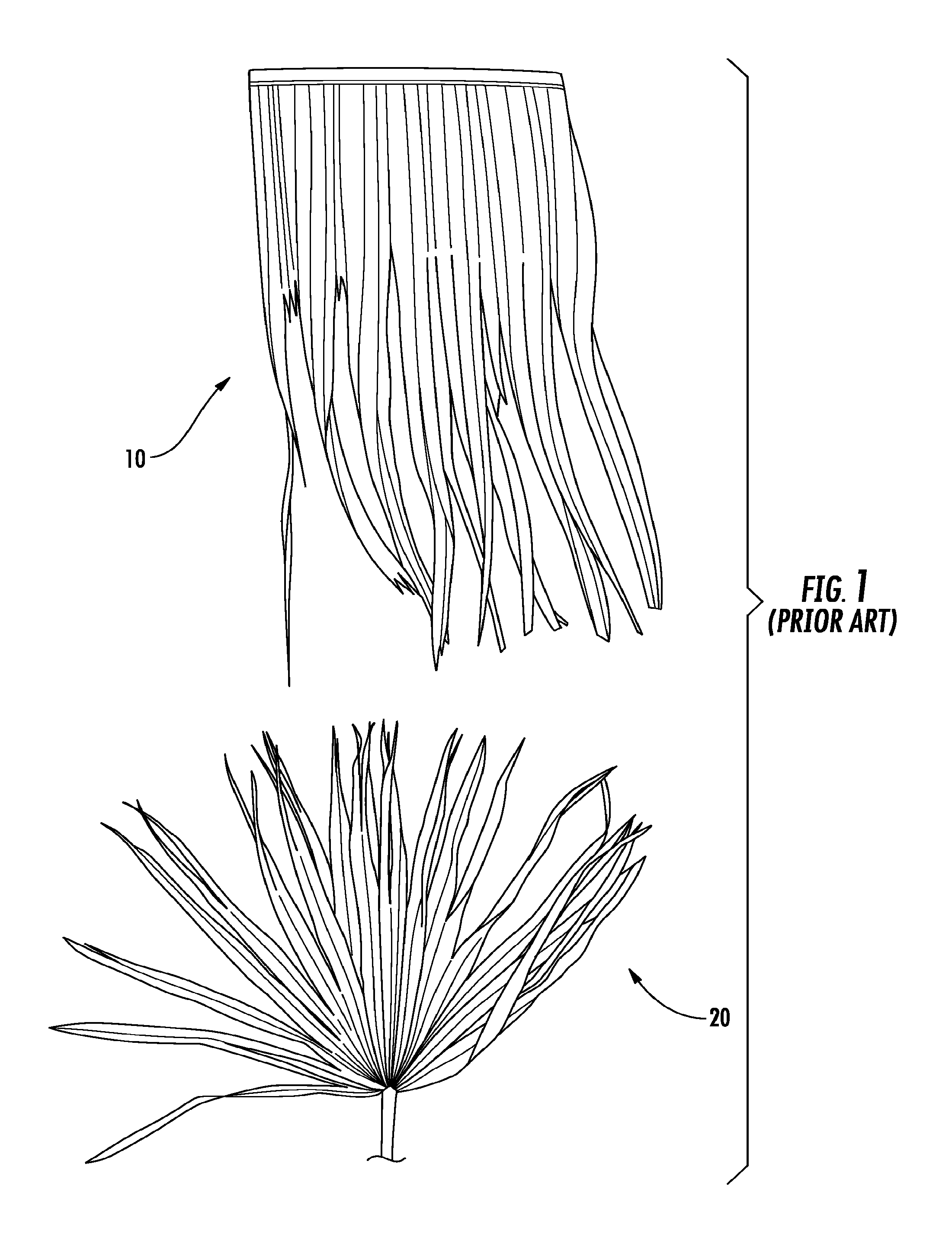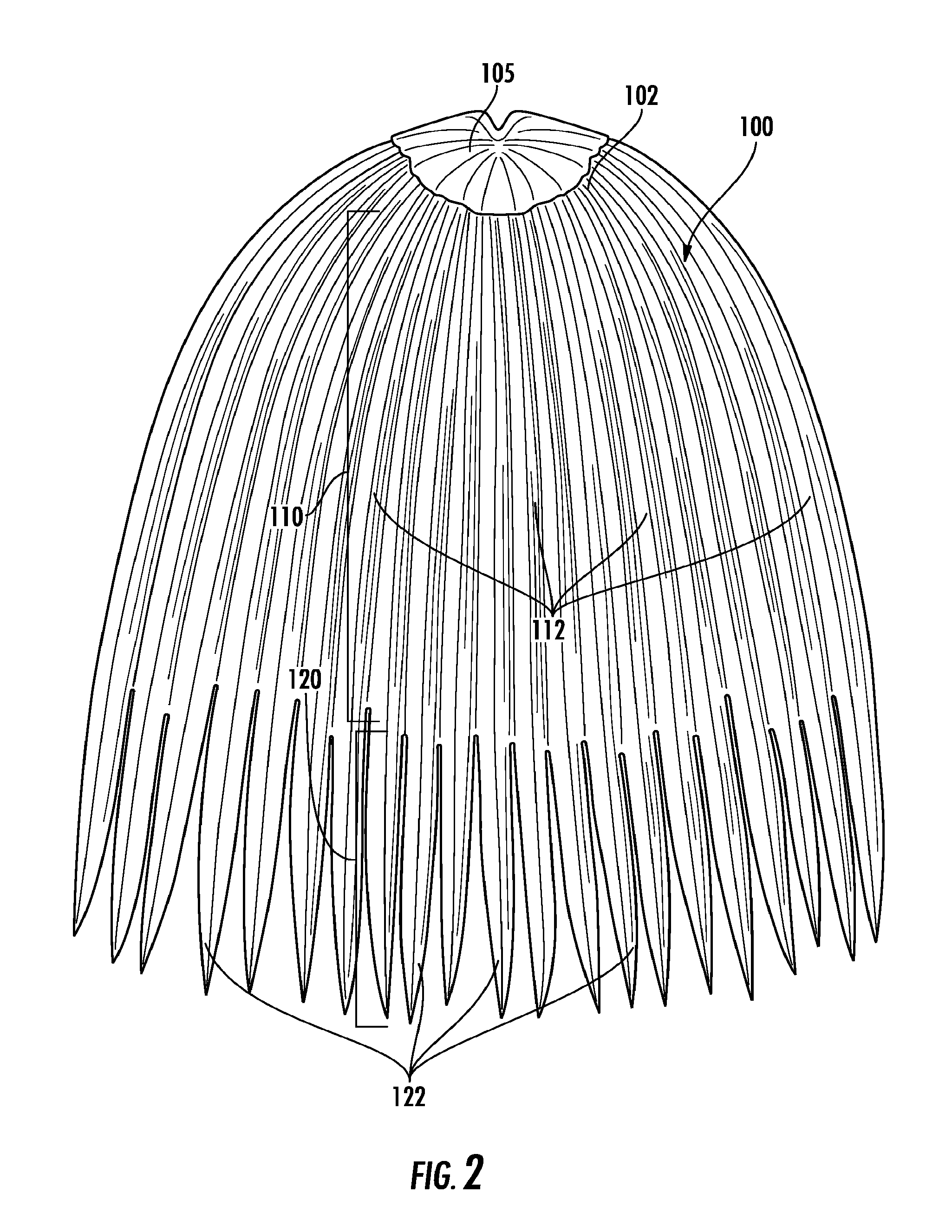Synthetic thatch members for use as roofing material products and methods of making and using the same
a technology of synthetic thatch and roofing material, which is applied in the field of synthetic thatch elements, can solve the problems of reducing the commercial viability of natural thatch elements as roofing material products, affecting the appearance of natural thatch elements, and unable to fully replicate the “natural” appearance,
- Summary
- Abstract
- Description
- Claims
- Application Information
AI Technical Summary
Problems solved by technology
Method used
Image
Examples
first embodiment 100
[0124]First Embodiment 100
[0125]Turning now to FIG. 2, a synthetic thatch element 100 according to various embodiments is illustrated, comprising at least a first surface 102, a second surface 103 (see FIG. 7), an attachment portion 105, a fused portion 110, and a serrated portion 120. As may be understood from this figure, in conjunction with FIG. 5, in certain embodiments, the synthetic thatch element 100 is generally configured such that the first and second surfaces 102, 103 are opposing surfaces of the element. As a result, in these and still other embodiments, the synthetic thatch element 100 is substantially two-dimensional in shape, with the exception of certain ridges, valleys, and / or ripples, all as will be described in further detail below.
[0126]In various embodiments of the synthetic thatch element 100, the attachment portion 105 is generally positioned adjacent an upper edge of the element, namely where a plurality of fused frond members 112 (as will be described later ...
third embodiment 300
[0160]Third Embodiment 300
[0161]Turning now to FIGS. 10A-D, a synthetic thatch element 300 according to various embodiments is illustrated, comprising at least a first surface 302, a second surface 303 (see FIG. 10B), an attachment portion 305, a fused portion 310, and a serrated portion 320.
[0162]As may be understood from these figures, the synthetic thatch element 300 may, according to various embodiments, differ primarily from the synthetic thatch element 100 of FIGS. 2-7 in that it may be made from a single piece of material, as opposed to a plurality of individual “frond” portions that may be arranged and / or fused relative to one another in either a “fused” or “serrated” fashion to form the element 100, all as previously described herein.
[0163]In certain embodiments, yet another distinction exists in that although certain embodiments of the element 100 have been described previously herein as having a relatively fixed thickness (e.g., 1 / 16 inch), the thickness of the element 30...
fourth embodiment 400
[0166]Fourth Embodiment 400
[0167]Turning now to FIGS. 11A-D, a synthetic thatch element 400 according to various embodiments is illustrated, comprising at least a first surface 402, a second surface 403 (shown in FIG. 11B), an attachment portion 405, a fused portion 410, and a serrated portion 420.
[0168]As may be understood from these figures, the synthetic thatch element 400 may, according to various embodiments, differ primarily relative to the elements 100, 200, 300, as have been described previously herein, in that the element 400 may have its greatest width 480 substantially within the serrated portion 420, versus alternative embodiments (e.g., element 100) wherein the greatest width (e.g., width 180) lies substantially within the fused portion of the element. In this manner, it should be understood that the primary advantage of such a configuration is a broader coverage of the serrated portion than otherwise possible, resulting in a more “fan-like” structural configuration of ...
PUM
| Property | Measurement | Unit |
|---|---|---|
| length | aaaaa | aaaaa |
| length | aaaaa | aaaaa |
| length | aaaaa | aaaaa |
Abstract
Description
Claims
Application Information
 Login to View More
Login to View More - R&D
- Intellectual Property
- Life Sciences
- Materials
- Tech Scout
- Unparalleled Data Quality
- Higher Quality Content
- 60% Fewer Hallucinations
Browse by: Latest US Patents, China's latest patents, Technical Efficacy Thesaurus, Application Domain, Technology Topic, Popular Technical Reports.
© 2025 PatSnap. All rights reserved.Legal|Privacy policy|Modern Slavery Act Transparency Statement|Sitemap|About US| Contact US: help@patsnap.com



